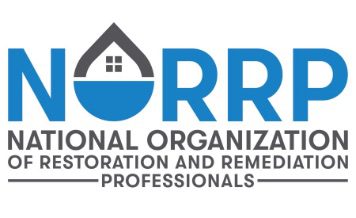Expert Insights on Winter Water Damage Preparedness
Expert Insights on Winter Water Damage Preparedness
The winter can be fraught with weather-related challenges regardless of where you live. From rain in the Pacific Northwest to melting snow in the Northeast and even hurricanes in the Southeast, there are many opportunities for winter water damage to affect your home. Ensuring your home is resilient to these challenges despite rain, wind, and cold weather will help keep your space protected and secure.
However, many people simply don’t know where to start when it comes to preparing their homes for the winter season. There are many precautions to avoid a weather-related catastrophe. Below, we’ll explain how to avoid winter water damage by protecting your home before the harsh weather sets in.
7 Tips for Preparing Your Home Against Winter Water Damage
1. Inspect and clean gutters
Before doing anything else, clean your gutters and downspouts of all leaves, twigs, and other debris. This natural material can cause water to back up and freeze, leading to ice dams that clog gutters and prevent proper drainage. Ice can seep into walls and ceilings as it melts, causing water damage. Regularly cleaning your gutters before winter sets in can help protect your home’s walls and foundation.
2. Seal windows and doors
Inspect windows and doors for cracks and gaps where cold air and water can enter. If needed, apply weatherstripping or caulking to seal drafty areas. This helps insulate your home, prevents snow or ice from melting and leaking indoors, and increases energy efficiency.
3. Insulate pipes in vulnerable areas
Pipes in unheated areas, like basements, attics, or crawl spaces, are prone to freezing. Before winter, wrap these pipes with insulation to reduce the risk of freezing and bursting. Use foam pipe sleeves or heat tape on exposed pipes, especially in icy areas.
4. Check and maintain your roof
Inspect your roof for missing or damaged shingles, cracks, and other vulnerabilities. Even small gaps can let melted snow seep into your attic, leading to water damage and mold growth. If you spot any compromised areas, fix them immediately, and consider installing a roof heating cable if ice dams are a recurring problem in your area. A well-maintained roof is critical in keeping water out during winter.
5. Install a sump pump or test your existing one
A sump pump in your basement or crawl space can prevent flooding by directing excess water away from your home. Ensure your sump pump is in good working condition, and test it before winter storms. If you don’t already have one, consider installing it in areas prone to water intrusion.
6. Disconnect outdoor hoses and cover faucets
Disconnect all outdoor hoses and store them before winter. Leaving hoses attached to faucets can cause water to freeze and back into your pipes, causing them to burst. Then, cover your outdoor faucets with insulated covers to protect them from freezing temperatures, which can prevent costly plumbing repairs and water damage.
7. Install water leak detectors
Place water leak detectors in areas prone to leaks, such as basements, under sinks, and near water heaters. These devices can alert you immediately to leaks, allowing you to take action before significant damage occurs. Some models even offer smart connectivity, so you can receive alerts on your phone, providing peace of mind throughout the winter season.
Dry Kings Can Help Safeguard Against Winter Water Damage
Even with the best precautions, winter can get the best of us. If you notice water intruding into your home or mold growing in damp areas, contact the experts at Dry Kings. Our team can help you confidently navigate the colder months and protect your home's safety.
Contact
More News
Newsletter
Sign up and receive valuable tips to help you protect your residential building or commercial property from damages.
Awards

















